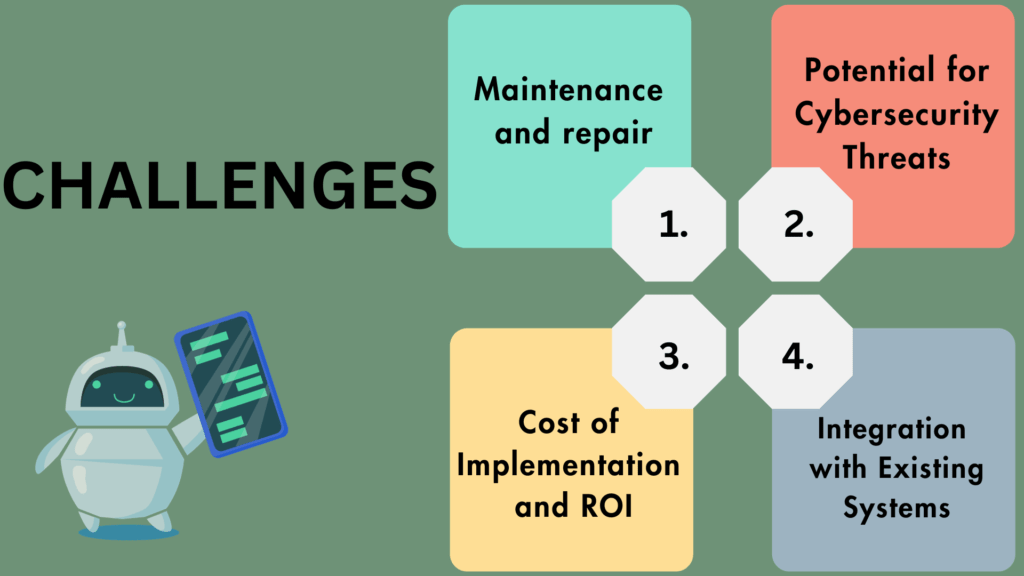In the rapidly evolving landscape of logistics and supply chain management, the integration of robotics has emerged as a transformative force. Robot warehouse picking is one of the many applications reshaping traditional warehousing practices, leading to unprecedented levels of efficiency and productivity. The contemporary warehouse has transcended its traditional role as a mere storage facility, evolving into a dynamic center of automation and innovation. In this article, we will thoroughly explore the substantial impact of robotics within the realm of warehousing, illuminating the profound transformation they bring to the conventional notion of a warehouse worker.
Historically, warehouses were labor-intensive environments, relying heavily on human workers for tasks like order picking, inventory management, and shipping. This manual labor often resulted in inefficiencies, errors, and high operational costs. Nevertheless, the emergence of robotics has entirely altered the landscape. The fusion of automation and artificial intelligence has empowered warehouses to streamline their operations, curtail expenses, and elevate overall productivity significantly.
Robot Warehouse Picking
One of the most revolutionary applications of robotics in warehousing is robot warehouse picking. In the past, order picking was slow and error-prone, requiring workers to navigate large warehouses to find items for shipping. However, the introduction of robots endowed with cutting-edge sensors, machine learning algorithms, and computer vision has brought about a remarkable metamorphosis of this arduous task.
These robotic systems can navigate through the warehouse with remarkable precision, identifying and collecting items with speed and accuracy that surpasses human capabilities. They can also adapt to dynamic environments, quickly adjusting their routes and actions in response to changes in inventory or order priorities. As a result, the efficiency gains are substantial, reducing order processing times and increasing the throughput of warehouses.
Robot Warehouse Worker
Robotics’ rise in warehousing may raise job displacement concerns, but often robots augment rather than replace human workers. The concept of a robot warehouse worker emphasizes collaboration between humans and robots to maximize efficiency and safety.
Within a collaborative setting, robots undertake repetitive and physically taxing assignments, encompassing activities like heavy lifting and long-distance travel within the warehouse. This allows human workers to concentrate on endeavors demanding creativity, problem-solving, and decision-making skills. This allocation of tasks not only enhances workforce efficiency but also enhances workplace safety by diminishing the potential for injuries linked to manual labor.
Accurate and efficient inventory management is vital for any warehouse’s success. Traditional methods of counting and tracking inventory are time-consuming and prone to errors. Robotics has introduced automated solutions that continuously monitor and manage inventory levels.
Robotic systems equipped with RFID technology, for instance, can scan items and update inventory records in real-time. This real-time visibility into stock levels enables warehouses to reduce overstocking and understocking issues, minimizing carrying costs and ensuring that products are readily available for order fulfillment.
The Role of Artificial Intelligence
Artificial intelligence plays a pivotal role in the effectiveness of robotics within the warehousing environment. AI algorithms enable robots to adapt and learn from their experiences, becoming more efficient and capable over time. These algorithms analyze data from various sources, including sensors and cameras, to make informed decisions about navigation, item identification, and task prioritization.
Machine learning algorithms are also employed in predictive maintenance, helping warehouses identify and address issues with robots before they lead to downtime. This proactive approach ensures that the robotic workforce remains highly reliable and operational.
Security and Regulatory Compliance
Safety is a paramount concern in warehousing operations. Robots come equipped with sophisticated safety features, including collision detection and avoidance systems, guaranteeing their ability to operate harmoniously alongside human workers without compromising safety. These safety mechanisms assume particular significance in collaborative settings where close interaction between robots and humans is a common occurrence.
Furthermore, the integration of robotics in warehousing can contribute to compliance with regulatory requirements. For example, robots can track and record data related to temperature, humidity, and other environmental factors, helping warehouses meet the stringent storage conditions demanded by certain industries, such as pharmaceuticals and food.
Beyond the operational advantages, the adoption of robotics in warehousing can have a profound economic impact. The Economic Impact of Robotics extends far beyond the initial investment. While the upfront cost of implementing robotic systems may appear substantial, the long-term benefits, including increased productivity, reduced labor costs, and enhanced accuracy, often far surpass these initial expenses.
Moreover, robotic solutions’ scalability allows warehouses to quickly adapt to changing demands. Whether a warehouse needs to expand its operations or adjust to seasonal fluctuations, it can easily integrate additional robots or reconfigure existing ones to meet its evolving needs. This adaptability is a testament to robotics’s significant cost savings and economic flexibility in the warehousing industry.
Challenges and Considerations

While the benefits of robotics in warehousing are evident, it is essential to acknowledge and address specific challenges.
Maintenance and repair:
Maintenance and repair of robotic systems require specialized knowledge and resources. Warehouses must invest in training and support to ensure that their robotic workforce remains operational and efficient.
Potential for Cybersecurity Threats:
As robots are increasingly connected to networks and systems, they become potential targets for cyberattacks. Implementing robust cybersecurity measures is crucial to safeguard sensitive data and the integrity of warehouse operations.
Cost of Implementation and ROI (Return on Investment):
Acquiring and implementing warehouse robotics entails high initial costs for purchasing, integrating, and training the workforce for efficient operation. It is essential to carefully evaluate the potential return on investment to justify the expenditure.
Integration with Existing Systems:
Integrating robotic systems with existing warehouse management software and other technology platforms can be complex and may require significant customization. Compatibility issues and ensuring seamless integration are vital considerations.
Road Ahead
The future entails refining human-robot collaboration, standardizing interfaces, and ensuring sustainable deployment of these technologies to address key challenges. By navigating these challenges effectively, the future of warehousing is on course to revolutionize how goods are stored, picked, packed, and delivered, setting new benchmarks for efficiency, sustainability, and customer satisfaction.
Looking to the future, the trajectory of robotics in warehousing appears promising and transformative. As technology progresses and integration becomes smoother, the possible uses of robotics in logistics and the supply chain are likely to grow. It’s vital to maintain robots well, ensure robust cybersecurity, and have a skilled workforce to maximize the benefits of this incredible technology. As robots keep getting better, they guide us toward a future where logistics and supply chains work seamlessly with automation, giving us flawless experiences and a new level of efficiency.
Conclusion
Using robots in warehouses is a big deal, not just a trend. They help workers do their jobs better, faster, and safer. Robots and smart technology make warehouses more efficient and save a lot of money. But we need to take care of them and train our workers well. This robot revolution guides us toward a future where things run smoothly and efficiently. It’s an exciting journey towards progress.


One Response